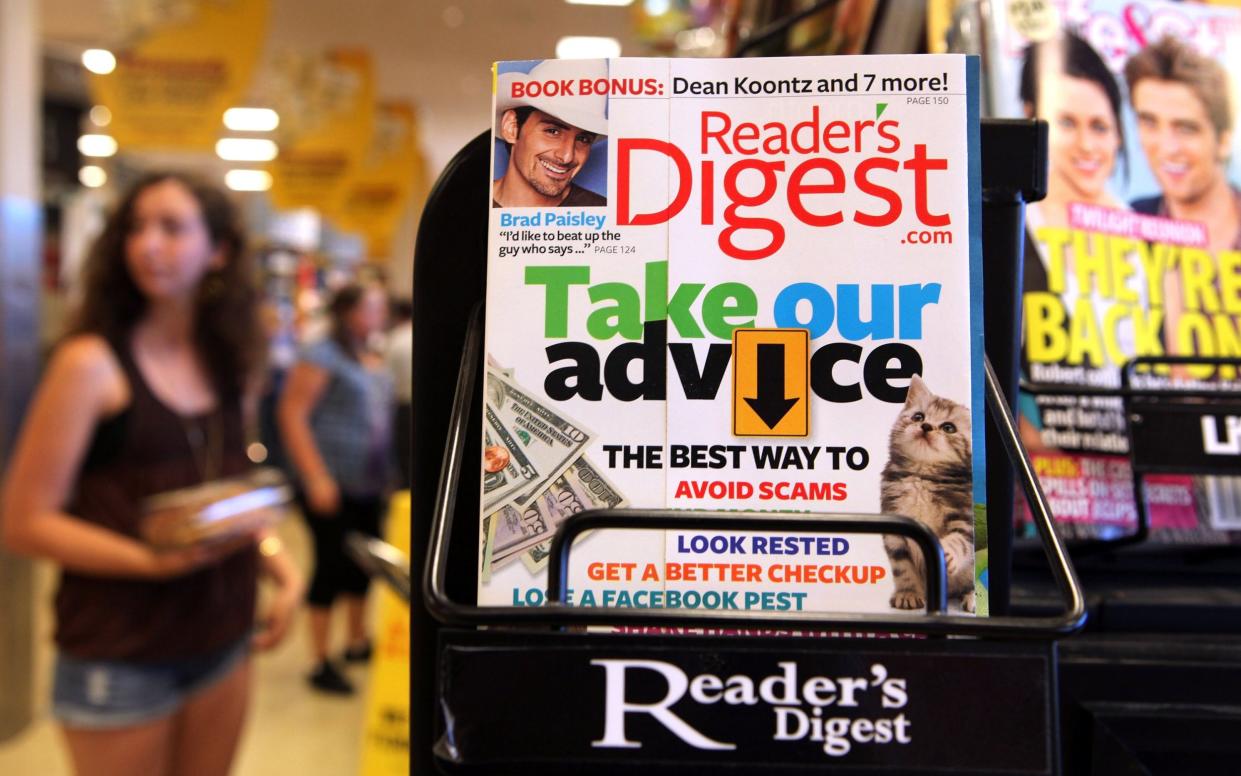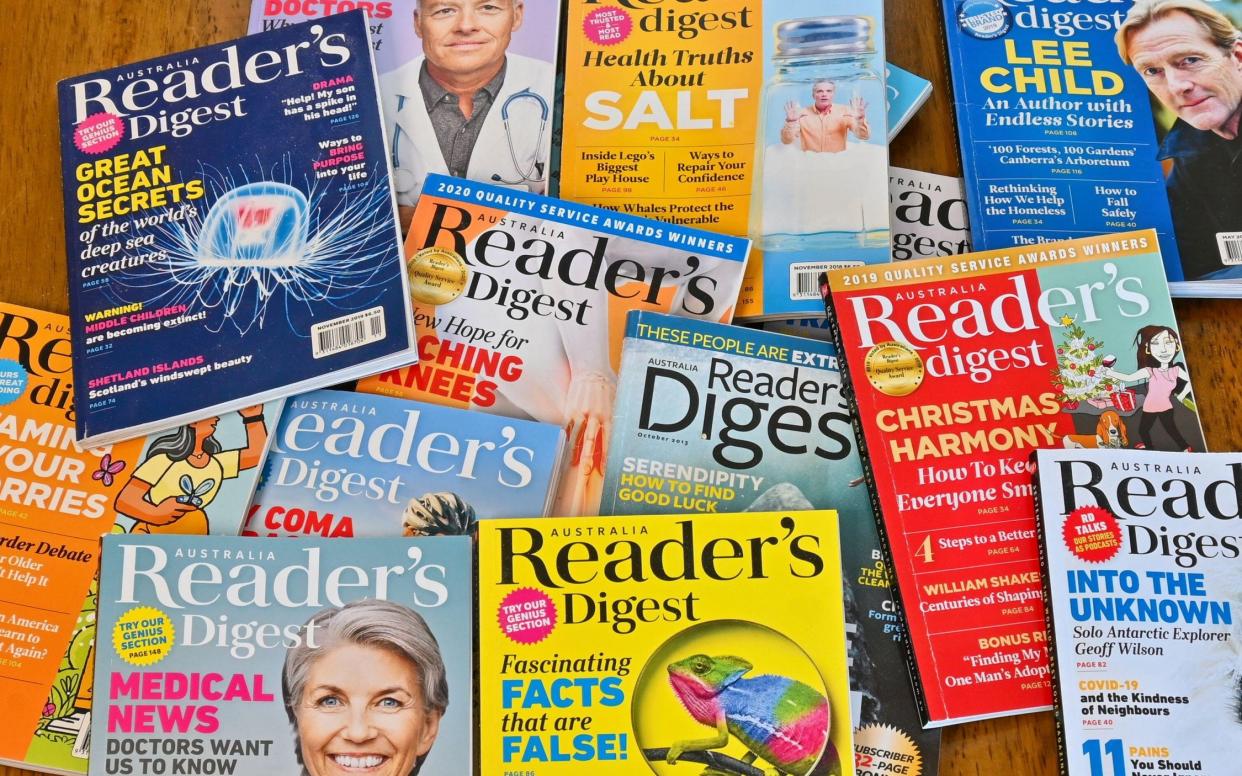From the shipping forecast to grime music: What went wrong for Reader’s Digest

Dentist’s waiting rooms and the lounges of provincial guest houses will never be the same again. Reader’s Digest magazine is no more.
First published in Britain in the year that Hitler marched into Austria and the ballpoint pen was invented, it could perhaps, only be within the pages of the now-not-so-venerable Reader’s Digest magazine that both events would be given roughly equal weighting.
Fast forward from 1938 to this Monday morning when, as a regular contributor to the UK edition of the magazine, I received the kind of boiler-plate missive that every freelance writer who is owed money dreads to receive.
“It has been determined that the Company no longer has the financial means to continue to trade in its current capacity… So we are unable to commit to this feature at this present time,” wrote the magazine’s UK managing director Julie Leach to me and, no doubt, scores of other freelance writers and designers. “We will cease to publish the print edition of Reader’s Digest with immediate effect… May 2024 was the last issue.”
Administrators Wilson Field have been called in to chew over the remnants of a magazine that was once a by-word for all that was most cosy, comforting and, often, borderline soporific in the publishing industry.
My own relationship with Reader’s Digest was a distant but consistent and cordial one. The magazine’s editor, most latterly a very bright and kind woman called Eva Mackevic, utilised my penchant for the esoteric and commissioned me to interview notables from the late Radio One DJ Annie Nightingale to the former British Ambassador to the Czech Republic as well as unleashing me to write about more typically Digest-friendly topics as the shipping forecast and the Dorset “ghost village” of Tyneham. “After 86 wonderful years, I’m very sad to share that Reader’s Digest UK has come to an end,” she wrote yesterday.
It turned out that I’d climbed aboard this, the sedentary, well-polished family Volvo of the magazine world, far too late. Founded as a kind of pre-internet content aggregator by DeWitt Wallace and his wife Lila in 1922, their humble venture (inspired by DeWitt’s hobby of collecting magazine articles during his convalescence from injuries sustained in the Great War) became a publishing behemoth. By the early 1960s there were 23 million people reading one of its 40 different international editions, published in 13 languages.
The British edition differed little from the American issue in terms of tone of content. From its origins to its final days, Reader’s Digest’s sweet spot was a clement mixture of always slightly patrician societal queries (‘what causes us to swear and what does it say about us and the role of foul language in society’), conciliatory balms applied to the rancour of ageing and other not-overly-graphic maladies (‘we learn how to stop the world from spinning’ relating to vertigo sufferers) and affirmational tales from unheralded, slightly arcane, yet worthy individuals such as a chaplain or an arenologist (someone who studies sand).

I often felt that if I could come up with a pitch that somehow combined news of a quick cure for gout which had first been successfully tested on a rural butcher whose hero was David Lloyd George then I might have been offered a lifelong retainer.
Such was the magazine’s wealth in its pomp that the walls of its worldwide HQ in Manhattan were lined with original works by Matisse, Renoir and van Gogh.
You know what comes next. The jack hammer of the internet penetrated the sturdy print edition of Reader’s Digest with predictable alacrity. Vaunted solutions (and it does seem there were many) to the problem of keeping Reader’s Digest relevant reached a point where I (as a humble freelance contributor who was never party to in-house editorial or strategy meetings) wondered what exactly was going on.
In recent years the website continued to run pieces about how to give a dog first-aid and ten reasons to visit Puglia. But these were joined by interviews with the rapper Ramz and an introduction to grime music. Somehow, this cocktail of freshly pressed corduroy and hipster vape smoke failed to stop the rot. Ultimately, as Mackevic put it: “The company just couldn’t withstand the financial pressures of today’s unforgiving magazine publishing landscape.”
At the time of writing, the British Reader’s Digest website is still extant though yesterday’s news, coming off the back of two previous bankruptcies (in 2009 and 2013) filed by the global parent group, Reader’s Digest Association, augers ill.
Ultimately, it is perhaps something more amorphous than the internet that has spelt the end for Reader’s Digest UK. Chiefly, the way we age has altered beyond recognition from the publication’s heyday.
RD, despite its best recent efforts, still speaks of retirement, and the ushering in of an era of cruise brochures, cashmere and catarrh. Now that the retired are often seen breezing past wheezing 40-somethings on ski slopes, the notion of buying your septuagenarian parents a Reader’s Digest subscription for Christmas is likely to be met with a spiky joke about whether you are planning on offering them a birthday trip to Dignitas too.
That’s not a look that sells magazines. Though, if any dentists are concerned about what to put in their waiting rooms, please get in touch. My collection of back issues are on sale at a very reasonable rate. And there are still enough people who want to know the ten best ways to reduce liver spots.


